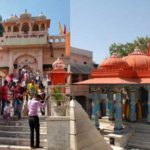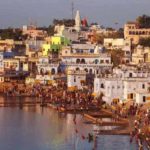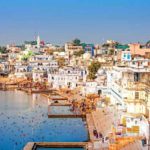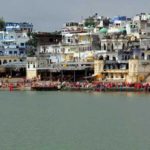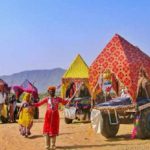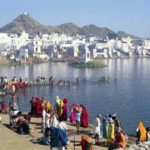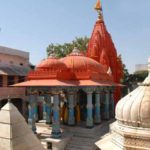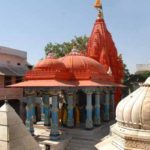A Complete Tourist Guide of Pushkar famous for the one and only temple of Lord Brahma in India, is a beautiful town at the distance of 14 km from another famous pilgrimage of Ajmer. Located on the banks of beautiful Pushkar Lake, the beautiful city is dotted by temples that are relatively newly constructed. It is believed that they were dissipated in the subsequent of Muslim Invasions that are later on rebuilt. Brahma Temple is the main temple here where tourists and devotees from across the country come to visit the beautiful city.
Talking about Pushkar tourism, the beautiful town is famous for Brahma Temple and Pushkar Lake only. However, there are numerous wonderful places to explore like Savitri Temple that is also known for its high importance. Old Pushkar is another wonderful area located at the distance of 4 km from the lake that is also equally venerated by the Hindus A Complete Tourist Guide of Pushkar.
The beautiful town is also famous for the world-famous Camel Fair organized in the month of November every year. Tourists from across the world prefer to spend a day or more to celebrate the holidays in Pushkar during festival season. Some of the wonderful tourist destinations to explore in Pushkar include Pushkar Lake, Brahma Temple, Varaha Temple, Merta Aptaeshwar Temple, Rangji Temple, Camel Safari, and a lot more. There are numerous wonderful tourist places in and around Pushkar Tour Packages that will surely keep you enticed and spell bound for the time to come.
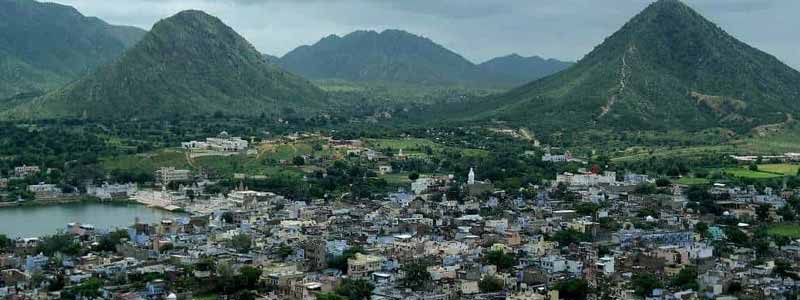
History of Pushkar
The history of Pushkar can be traced back to ancient times. The microliths found near Khera and Kedari are a strong example of human existence in the region during the prehistoric era A Complete Tourist Guide of Pushkar.
Apart from this, this place also holds a great significance as per the Hindu Mythology. One of the mythological stories still is very prevalent in the region – it happened so that once, a battle was fought between Lord Brahma and Demon Vajra Nabh.
In the battle, Lord Brahma ultimately killed the demon using lotus as his weapon. But, three petals of the lotus flower fell in different parts of Pushkar. It is believed that where these petals fell, three lakes emerged. One of the lakes is believed to be the Pushkar Lake which is surrounded by ghats and temples and is also considered as a pilgrimage site for Hindu devotees A Complete Tourist Guide of Pushkar.
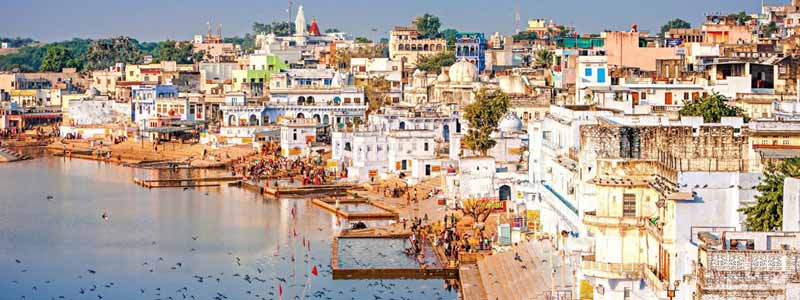
Major Attractions in and Around Pushkar
The city of Pushkar is one of the prime pilgrimage places in India. Pushkar, Rajasthan sightseeing tour will consist mostly of the temples in the city, the most revered one being the Brahma temple. A Complete Tourist Guide of Pushkar Other vinclude a lake and a fort.
Pushkar Lake
Legend has it that a lotus fell from the hands of Lord Brahma, the god of creation, and Pushkar Lake was born, making it as old as creation itself. Hindu mythology speaks about Panch Sarovars (Five Lakes) – Man Sarovar, Bindu Sarovar, Narayan Sarovar, Pampa Sarovar and Pushkar Sarovar, of which, Pushkar Lake is considered to be the most sacred. Devotees believe that bathing in the waters of the lake on Kartik Poornima (during the Pushkar Fair) will nullify sins and cure all skin diseases. This artificial lake has been created by building a dam and lies nestled in the folds of the Aravalli range, surrounded by a desert and hills on all sides.
The lake has 52 bathing ghats (steps leading into the water) and the water around each ghat is believed to possess special medicinal powers. The Pushkar Lake is a popular destination for pilgrims, as evidenced by the over 500 temples that dot the banks of the lake A Complete Tourist Guide of Pushkar.
Famous for: Nature, Pilgrimage, Photography.
Tickets: No entry fee.
Opening Timings: Open all days (9am to 6pm).
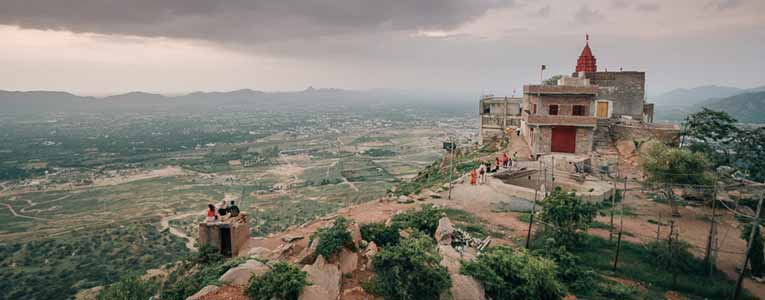
Savitri Temple
Located atop the Ratnagiri Hill, Savitri Temple has a legend behind it. Built in 1687, it is said to be the place where the Goddess Savitri came and rested after revolting with her husband on marrying another woman. This temple was built by her and served as a lookout to watch her husband’s erring ways. Visiting this place of worship is quite an experience A Complete Tourist Guide of Pushkar.
The route that leads to the temple meanders through the hills. You need to trek for about an hour to get to the top of Ratnagiri Hill. From the top you are rewarded with breathtaking views of the surrounding regions. You can see the vast expanse of the Pushkar Lake in the distance and can also see parts of the desert. This multi-faceted view is truly engaging and visiting these places is amongst the pleasurable things to do in Pushkar.
Visiting this temple has religious significance. Given that the trek to reach here tiresome, it is considered to be undertaking a punishment for any sins that you may have committed. Currently, the idols of Savitri and Gayatri have been installed in the temple. A Complete Tourist Guide of Pushkar Pilgrims from all over India visit to pay their respects to these divine Goddesses.
Famous for: Pilgrimage, Photography, Viewpoints.
Tickets: No entry fee.
Opening Timings: Open all days (5am to 12 pm & 4pm to 9pm).
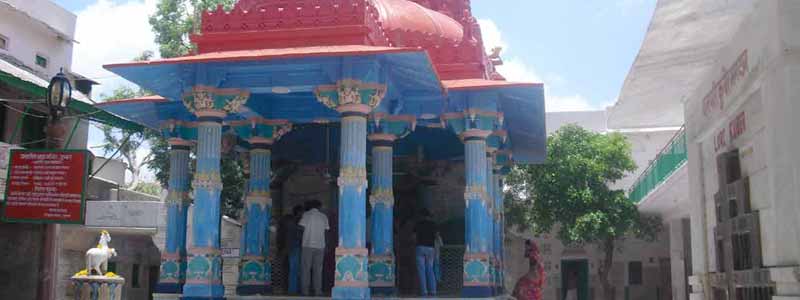
Brahma’s Temple
Also called the Jagatpita Brahma Mandir, this temple is located near to the Pushkar Lake. It is one of the few Brahma temples remaining in the country and is amongst the rare places to visit in Pushkar. The place of worship was built in the fourteenth century. Constructed of marble and stone, it has a unique architecture along with the majestic red pinnacle. The bird motif of the sacred structure gives it a distinctive identity. Inside the place of worship, images of Brahma adorn the sanctum sanctorum. Married men are not allowed entry into the sanctum sanctorum as this place is reserved only for ascetics or sanyasis A Complete Tourist Guide of Pushkar.
There are many fascinating architectural aspects of this temple. The pillared outdoor hall is one such structure that will leave you spellbound. The insides are built with stone slabs and molted lead has been used to combine them on a high plinth, numerous marble steps lead to the temple. The scared place is visited by devotees throughout the year. Many come here only after taking a holy dip in the Pushkar Lake. Dedicated to Lord Brahma, the most important festival is held here during the months of October and November.
Famous for: Architecture,Pilgrimage, Photography.
Tickets: No entry fee.
Opening Timings: The summer timings (5 am to 1:30pm & 3pm – 9pm ) and the winter timings (5 am to 1:30pm & 3pm – 8:30pm).
Varah Temple
Among one of the very rare temples devoted to the varaha incarnation of Lord Vishnu, Varaha Temple is worthy a visit due to its uniqueness. According to a legend, it was part of a main temple destroyed by Aurangzeb and the evidence of the same can be found nearby. It is also one of the oldest temples around Rajasthan, as is evident by its architecture and current state. A Complete Tourist Guide of Pushkar It’s closeness to the main city and the nearby markets make it easily accessible.
Famous for: Pilgrimage, Photography, Architecture.
Tickets: No entry fee.
Opening Timings: Open all days.
Man Mahal
Built by Amber’s Raja Man Singh, this beautiful palace is located close to the Pushkar sarovar. The palace is built in traditional Rajasthani architecture and has a temple inside. The palace is maintained by the Rajasthan Tourism Development Corporation and is used as a tourist bungalow. The key attractions for tourists are breathtaking sunset views of the lakes and temples around. Camel riding and camping arrangements can be made on request for guests A Complete Tourist Guide of Pushkar.
Famous for: History, Nature, Photography.
Tickets: No entry fee.
Opening Timings: Open all days (9 am to 5pm).
Rangji Temple
A stunning architectural marvel, Rangji temple is an amalgamation of Mughal, Rajput and South Indian architecture. This temple is devoted to an incarnation of Lord Vishnu, Rangji and is always filled with worshippers. Due to its proximity to the old markets of A Complete Tourist Guide of Pushkar, many western visitors also come here while exploring the city.
Famous for: Pilgrimage, Photography, Architecture.
Tickets: No entry fee.
Opening Timings: Open all days (6am to 7pm).
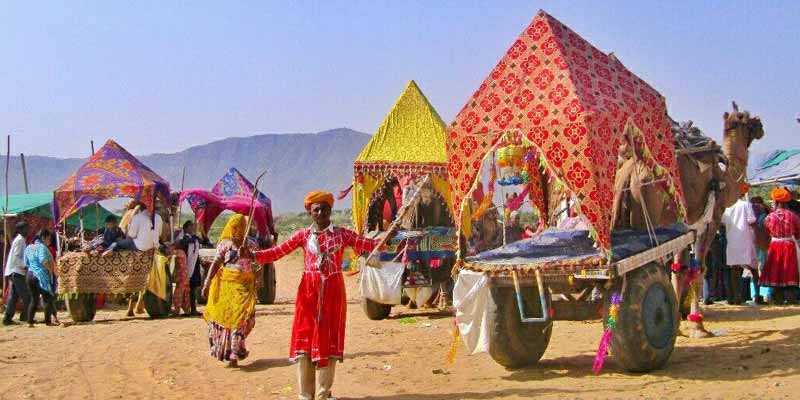
Fairs and Festivals in Pushkar
Rajasthan is a land of fairs and festivals, and also Pushkar is most certainly the center. There are lots of nationwide as well as worldwide fairs held in this community. One of the most popular amongst these is the Pushkar Fair that is organized for a week in late October or very early November. This includes a variety of little stalls that market standard Rajasthani textiles, food things as well as style along with a large camel and also cattle market.
Pushkar is also a very sincere city as well as celebrates all other celebrations with wonderful splendor. Dussehra, Diwali, Teej and also Holi are significant events that are full of color as well as pleasure and are a best possibility for travelers to get a peek into the life of A Complete Tourist Guide of Pushkar.
Best Time to Visit Pushkar
A Complete Tourist Guide of Pushkar has an extreme environment with hot days as well as chilly evenings in the summer. The optimum temperature level throughout the summer seasons can increase to (45 ° C) while in the winters it can be listed below (10 ° C). There is not much rainfall throughout the monsoon. The most effective season to visit this location is in the winter’s months Oct to mid-Mar.
How to Reach Pushkar
Pushkar is a town in the Indian state of Rajasthan, which is known for its temples, ghats and influence of the 14th century civilization. It is one of the oldest inhabited cities of India and has been a great tourist destination from last many years. The major attractions that can be explored during a visit to this city include Pushkar Lake, Brahma Temple, Varaha Temple, Savitri Temple, Pushkar Camel Fair, etc.
By Air
Pushkar doesn’t have an airport but can be reached by air through the Sanganer airport. Flights from all major cities of the country can be taken to reach Pushkar through Sanganer. Taxis, transport buses and shared cabs are also easily available outside the Sanganer Airport.
By Road
Pushkar is well connected to several parts of the country by road. Buses, cars, cabs can be used to reach Pushkar from the National Highway that links the city to rest of the nation and vice versa.
By Rail
Ajmer junction is the closest railway station from where Pushkar can be reached easily. Located at a distance of 11kms, Ajmer station is connected to various parts of Rajasthan and India. Regular trains ply from the station and hence can be boarded accordingly.

